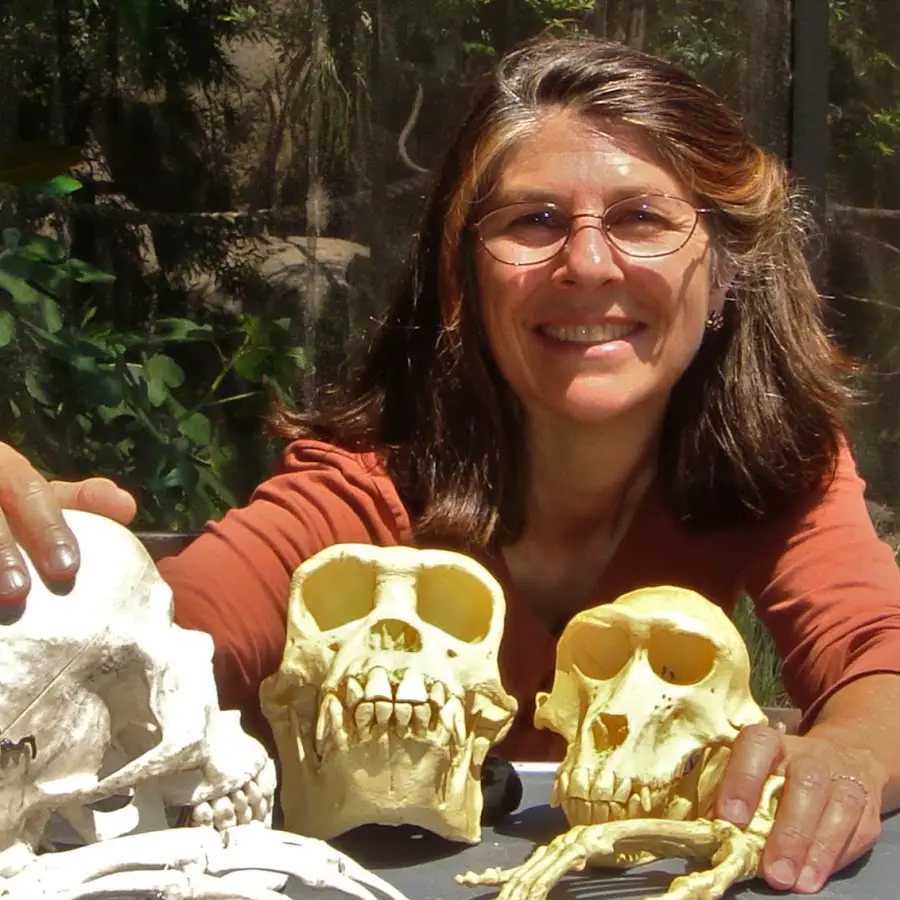
Loretta Bruening, PhD, author of the book ‘Status Games We Play and How to Stop,’ and founder of the Inner Mammal Institute.
Social media is one of, if not the most effective tools we have for staying connected to friends, family, our interests, and the daily news.
As of January 2021, 4.2 billion people worldwide use social media according a report from the website TechJury, and 2.8 billion of them are active Facebook users.
Many of the top uses for social media are constructive and positive in nature, but it isn’t always the case, especially among younger generations of users.
Competition to get “the perfect selfie,” and a bad case of “keeping up with the Joneses” are just a few potentially distracting ways that people use social media, and it can have negative effects on a person’s mindset and self-esteem for some people.
Recently Dr. Loretta Graziano Bruening, PhD and author of the new book ‘Status Games: Why We Play and How to Stop,’ joined AltHealthWorks.com for an interview on how to stop worrying about keeping up with others and seeking their approval on social media.
The goal is to “blaze new trails to your happy hormones (so) you will RELAX,” according to the book’s preview section.
The following is the interview with Loretta, conducted by Nick Meyer of AltHealthWorks.com:
NM: Hi Loretta and thank you for joining us. When did you book come out, and what has the reception been like so far?
LB: It came out at the beginning of September and I got a nice review on Publisher’s Weekly.
So, I write about the brain chemicals that make us feel good, and what turns them on.
My other books are about four chemicals; dopamine, serotonin, oxytocin and endorphins.
The chemical that triggers good feelings about status and motivates us to seek status is serotonin; I decided to devote a whole book to that because it is so complicated to understand and accept.
I signed a contract just before the lockdown, and had been happily writing it since then.
Dopamine is the one often blamed with the habit of seeking.
People are always seeking the next thing.
That’s the job dopamine is designed to do, to motivate you and to make you feel good when you have a positive expectation; “I’m expecting something good.”
Serotonin I feel is important to be proud, confident and strong, that’s serotonin.
NM: What do you think about people using social media in an attempt to produce more of these chemicals, is that a bad thing in your opinion?
LB: The way people are blaming these feelings on social media today is not really something I agree with, people have always been this way since the beginning of time.
My books are about how animals have these type of behaviors, which I explain.
That’s why every generation finds new ways to seek these chemicals with whatever technology becomes available.
Our brains are wired by past experience so whatever triggered your happy chemicals when you were young, the neurons connected. They’re not connected when we’re young.
Whatever made you feel good connected neurons including “bad” connected neurons.
For example, a parent bursts in on you with some negative message,
that builds a real physical pathway in your brain.
You get a (similarly delivered) message from your coworker and
you’re likely to perceive it that way.
You turn on your cortisol and consider it a threat
because you already have that chemical.

Photo via Northwell.edu
LB (continued): So if a person receiving it could interpret it in a positive way that would be nice, but (oftentimes) they might interpret it in a bad way like, Loretta is interrupting me, she’s going to get mad if I don’t respond to her immediately.
Maybe someone in your past got mad when you didn’t respond to them immediately.
But you can build a new pathway by saying, “Oh, isn’t this nice, they’re sharing this information with me and I have the freedom to choose when and how I will respond.
I grew up with a lot of negatives, I always felt like how I responded was going to get a bad reaction. I had to work in small steps. Even eye contact triggered cortisol pathways.
The first step was to know when I felt there would be a bad response, it was just an old circuit turning on unhappy chemicals. The chemicals we feel may be new, but they can feel like an unhealthy circuit which is old.
Like a lens, every brain builds that lens to see the world through their own lens.
NM: How does this work in the animal kingdom, and what role do the animal parts of our brain work in perceiving these messages either positively or negatively?
LB: So the way it works in the animal world is that if an animal wants a banana and it reaches for that banana, if the monkey next to it is stronger it could bite it.
So you feel like you want to protect yourself from getting bitten more than you want the banana, so your brain is always comparing yourself to other people and the brain releases the threat chemical cortisol to look for an opportunity to be in a position of strength.
If I compare myself to others I feel I’m the strong, then my brain releases the chemicals and I reach for the banana.
If someone always thinks they’re the weaker monkey (editor’s note: or feels like they don’t belong as part of the group for some reason, real or imagined), they never stimulate serotonin, and never stimulate themselves to take any risks to get rewards.
When we compare ourselves to others we may think rational thoughts, but we are still wired to past experiences.
The old pathways are built during childhood and adolescence, but when you’re aware of them you can build new pathways.
NM: Have you heard about different ways to create new pathways in the brain such as through the use therapy, biofeedback machines and emotional release work, and have you written about methods like these in your books?
LB: I’ve written a lot of books myself because I don’t really agree with what’s being done.
Biofeedback for example, I think that’s a great step.
Many things either create a victim feeling or they stop the old thought loop, but they don’t create a new thought loop; you have to repeat a new one with confidence in your own strength to build a new (mental pathway).
A lot of people don’t do that, but the inner mammal needs to feel strong and confident in its own survival skills to have an adult life, rather than to think that the world should take care of you.
My books explain this…The simplest one is ’14 Days to Sustainable Happiness,’ it’s a step-by-step method to understand your old pathways for turning on these chemicals and then designing steps to build new chemicals.
Next, it describes more of the science including the habits of a happy brain, it retrains your brain to boost serotonin, dopamine and oxygen levels.
NM: Can you talk a little bit more about how these different pathways are formed in our brains? I know I often feel a lot of stress and cortisol when I need to “intrude” on someone else or ask for help.
LB: We all have mirror neurons, which take in information from the people around us. When we were young the way we learn about the world is by mirroring the people around us.
I would guess when you were young you were exposed to a person who had a lot of these kinds of feelings of other people intruding on them.
Another is because we’re all wired for personal experience.
 My brother is 15 months younger than me so when I was young, everything that was mine, it was like he was there taking it from me.
My brother is 15 months younger than me so when I was young, everything that was mine, it was like he was there taking it from me.
That was my earliest experience in life, so once you have this experience it builds a real pathway in your brain and then you look at your world, it’s easy to find the information that fits, but you don’t see the rest of the story.
The more you feel like things are going to help you in the long run, the more you feel lighter, you take action, you take risks.
Also, you have to be realistic.
For example, a person who is young thinking, “I’m going to be a rock star.” If they don’t get any closer to being a rock star, their brain stops releasing the chemical that makes them excited, dopamine.
When you’re climbing a mountain you get excited when you’re closer to the top, if not, dopamine stops.
Practical goals and consistently taking action will build those small steps closer and every step closer releases more dopamine that leads you to take another step.
NM: What about finances, financial difficulties and cortisol, what is the connection there that often takes place?
LB: I have been on a podcast called Prosperity Place.
It’s natural for finances to trigger our cortisol response, because when you think about money it feels like a matter of life-and-death.
That’s because our brains are inherited from, let’s say the caveman who had to find fire all the time, coal, food, he had to meet his immediate survival needs.
When you don’t have enough money or you didn’t have enough money in the past, it’s wired to, it really feels like you’re not going to survive. The brain compares survival and money in your bank account.
So if you grew up with a real fear of not having enough money that would be a big pathway. Next problem, suddenly you have enough money, do you save it or spend it all at once?
If you spend it all at once it feels so good in that one moment, you feel like you are the “big monkey.”
Another possible problem is, you may think, “If I don’t spend it now, someone is going to take it from me. I’m going to lose it anyway, so I may as well spend it.”
My husband said if he didn’t eat his cookie right away, his big brother would grab his cookie, so you had to be in a hurry to eat it first.
‘Fourteen Days to Sustainable Happiness’ teaches you to go back and find those old moments wired in certain behavior, to change the behavior.
That’s why it takes a lot of repetition to build a new pathway, you take small steps, you put five dollars in a savings account, the next week ten dollars in a savings account, and that repetition builds a neural pathway that makes it feel like something that will last.
The final thing is to understand the difference between your human brain and your animal brain, everyone has an animal brain in their core.
It’s almost the same as animals and it controls our chemicals.
On top of that we have a human cortex which gives us the ability to use language and the ability to think about the future.
When we talk to ourselves it is all about the human part of our brain.
Everyone is in the same boat, so don’t worry about the social comparisons, just worry about the empowering part, you can build new pathways in small steps.
Dr. Loretta G. Breuning’s book ‘Status Games: Why We Play and How to Stop’ is available on Amazon, Barnes & Noble, or by visiting innermammalinstitute.org/books/statusgames
Thanks for installing the Bottom of every post plugin by Corey Salzano. Contact me if you need custom WordPress plugins or website design.





